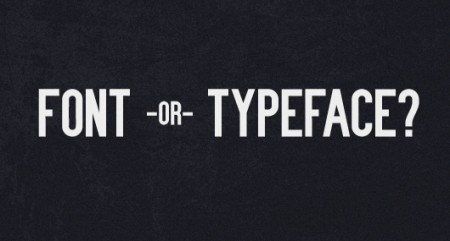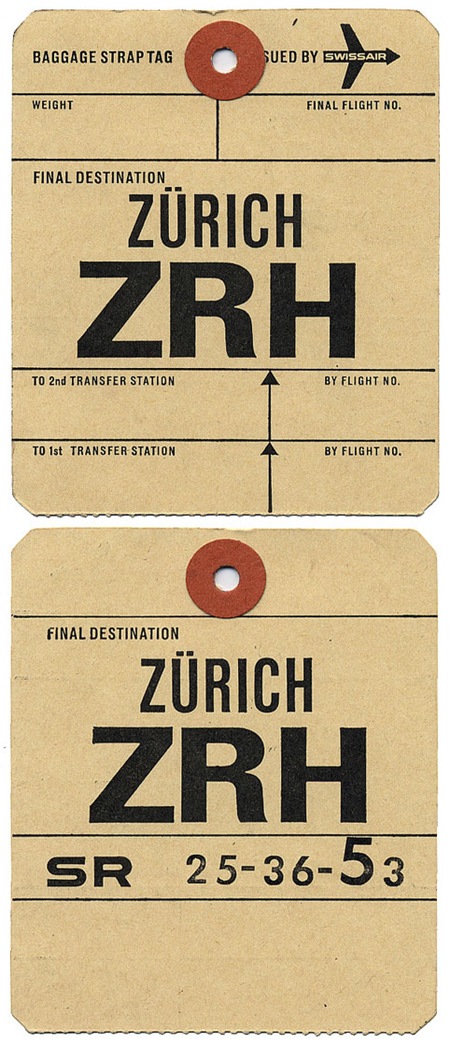
Alex and I were discussing this a while back so it was nice to see the whole subject wrapped up in a nice post over at Shelby White’s blog. Now you can annoy the hell out of all your non-designer friends by constantly correcting them when they use “font” incorrectly. Be sure to start off with “Actually…..”, people love that. I liked Nick Sherman’s take the best:
“The way I relate the difference between typeface and font to my students is by comparing them to songs and MP3s, respectively (or songs and CDs, if you prefer a physical metaphor).”
– Nick Sherman
For a while I thought font was sort of a dirty word, like it really didn’t have any proper usage when talking about design. Typeface still sounds better but it’s nice to know that font does have it’s own place in the world.



That’s an excellent explanation of the difference. I’m a design student in DC, and people (even professors) seem to use the two interchangeably, but the distinction is pretty useful, especially in a critique environment.
Also, the quote you have above is credited to Nick Sherman in the post, not to Mark Simonson.
potato potato…
while the technical lingo may be somewhat more complex who cares if font isn’t correct? it’s short and you know what it means
This was very helpful to me. I’m embarrassed to say I really had no knowledge on the discerning between the two and certainly feel much better after reading this. Thanks Shelby and Alex!
i don’t get the songs or mp3’s distinction…but songs (individually fonts) and an album collecting them all (a typeface) is a good way to put it.
Tardlovski-
I think the idea was that an MP3 is simply a digital representation of a song. The song itself is intellectual property, it’s the idea itself, it doesn’t pertain to any particular manifestation of that idea. In the same way, the Helvetica typeface is the idea that a lowercase “h” should look a certain way (and so forth), while the Helvetica Font is something you install on your computer that translates that idea into something Photoshop — for instance — can use to determine how to output text.
Thats definitely the idea, Scott.
The metaphor of the song vs. the mp3 (or cd—the actual disc, not an album of collected songs) helps distinguish between a font and a typeface because a typeface (like a song) is the creative output of a designer or group of designers (like a musician or a band). The font, on the other hand, is a digital (and very occasionally physical) reproduction of that original typeface design, just as an mp3 is the digital reproduction of single recording session.
So if you thought that Comic Sans wasn’t the right choice for your gram’s headstone, it’s the typeface that you don’t like—the Comic Sans font is just a file copied from a disk. Comic Sans the font will always be terrible, because it’s just a reproduction of a terrible typeface.
There are some occasions when one font is better drawn or reproduced than another, which can be due to the time and effort spent on drawing the characters or when the font was made (even Macs were slightly less slick in 1984). Loads of the fonts (digital files) available for download at free font sites are made by students or desktop designers (casual/non-professional) and are often poorly drawn (sometimes just scanned and poorly vectorized) imitations or adaptations of better know typefaces, but the real deal will always treat you better than Coolvetica ever can.
Ahh there’s always more but I feel like a loser and I haven’t even hit ‘submit’, so any interested parties should just go read Robert Bringhurst’s “The Elements of Typographic Style”. Absorb that book and you’ll have your own little relationship with the shit that allowed advanced civilization.
The article actually convinced me that there is no difference in common usage for a designer, and either one is correct. The musical metaphor is apt. You can walk into a friend’s house or a club where a DJ is playing and say “what record is this?” when you hear music playing. It will be understood by all that you’re asking what song it is. Font is a similar kind of synecdoche and if you think of it that way, it’s a perfectly valid use of the language to call typefaces “fonts”.
I guess the synecdoche can go the other way too. “Hey can you spin that one song?” You spin a record, not a song. Likewise, you can say “I just installed a bunch of typefaces” even though font is theoretically the correct usage in that situation.
And in common usage for designers, we are almost always legitimately talking about fonts. Can you send me that font? What font did you use for that? I tried a couple of different fonts but I like this on the best. Those are all accurate since, as designers, we are actually using the font. In certain academic situations it might make more sense to refer to typefaces though (so and so designed the typeface in 1952).
Yeah, it’s fair to say that Adobe has accepted “Font” as the widely used term for all of us designers.
And that’s a sad thing, since it’s wrong.
Actually, no. If font refers to the digital file rather than the abstract design then it’s quite right for programs like Photoshop to use the word font in menus and such, since those menus are used to select which digital font you want to load.
More reading, and perhaps the source of Shelby’s quotes: Font or Typeface.
I find the whole debate stupid. And people who argue it should be so because it’s right are tools.
Allow me to expand. The language is constantly growing, constantly changing and words are given new meanings every day whereas some words disappear altogether. Such is the way with all languages but English in particular has the habit of having many meanings to one word.
Most changes to the vocabulary occur our of simplicity, because there’s no point in using a cumbersome word like to ruminate when to think is much more accessible. Same thing with font and typeface. Typeface is long, cumbersome and most people don’t know what it means, meaning its meaning is sucked into the word font; it’s short, it’s clean and windows has been educating people on what it means. So it’s very hard for casual users to grasp yet another concept mostly because they don’t care.
Who cares how it’s right, the language is all about how it’s used. Who cares sambo actually a fruit, it’s spawned a controversy since most people know its racist meaning.
So feel free to bask in your knowledge of typeface versus font but correcting someone you’ll just come off as a jackass (not much unlike Kanye :D) and basically achieve nothing.
Typeface will be a dead word in a decade or so, since most people today don’t care about typography and the actual concept of the typeface is merged into the one of font.
Plus if you’ll look into the dictionary they don’t really know the exact distinction either.
And Scott you’re wrong with your metaphor. A font is one style of a typeface (not a computer file), whereas a typeface is all the styles in a font family. For example Helvetica Black is a font, and Helvetica is a typeface.
So font is always a reasonable word for how your characters look on screen.
@ eydryan, specifically:
“Who cares how it’s right, the language is all about how it’s used.”
Designers care because there is a distinction and an important one (to them). When I say “Futura” I mean the typeface, not the specific font of Futura Medium or Light or Bold or Condensed.
Also there is a brilliant article that David Foster Wallace wrote on Descriptive versus Prescriptive grammar. The basic gist of it that applies to this debate is that the Descriptive approach is a cop-out. The reason why words have meanings is so that we can convey those meanings with some degree of accuracy.
@aaron i still don’t understand what you meant by designers care. It’s not like I can’t tell a designer I want text in the Futura Light typeface and they won’t understand I meant the font. Or if I say I want him to use that Futura font he will understand freedom within his choice of weight and size.
Can’t find any situation where that may create a problem.
Read about descriptive/prescriptive grammar. Fail to see the point in the second 😀 Language is important only in how it’s used so you can easily communicate with someone. We could sit and argue here about how I like to spell colour with a u but it wouldn’t really change our understanding of the concept.
So, by all means maybe I’m not seeing it, gimme a bit more info about your perspective.